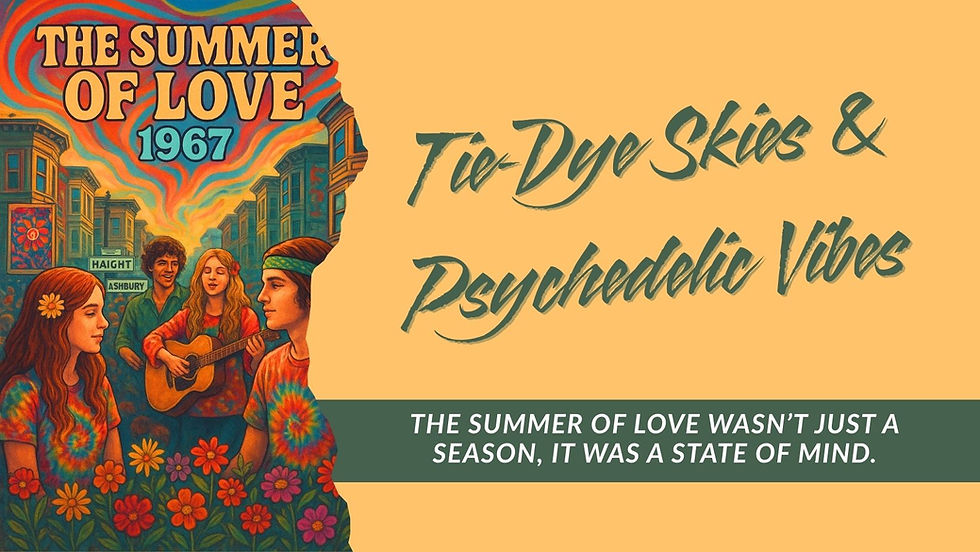The Summer of Love, 1967
- Belle

- Aug 29
- 2 min read

The summer of 1967, forever remembered as the Summer of Love, felt like a season when the world briefly tilted toward possibility. In San Francisco’s Haight-Ashbury district, thousands of young dreamers gathered, drawn by music, color, and the promise of a gentler way of living. The atmosphere seemed charged with a belief in peace and unity—food was shared freely, music spilled from open windows, and strangers treated each other like family.
The sounds of Jefferson Airplane, Janis Joplin, and The Grateful Dead became the heartbeat of the movement, while tie-dye shirts, flowers tucked in hair, and swirling psychedelic posters set the scene. It was an era defined by self-expression, a time when love was both a form of rebellion and a hope for something better. The Summer of Love stood as a symbol of youthful optimism, a moment in history when compassion and creativity were seen as forces powerful enough to reshape the world.
Looking back, the Summer of Love shines less as a single season and more as a symbol of youthful optimism. For a brief moment, it seemed as if compassion and creativity could change the world—and that dream still lingers, like music carried on the breeze of memory.
While I was only 12 at the time, the culture of that summer still stood as a beacon of youthful idealism, and as I came into my own interest in music, its echoes became part of the soundtrack that shaped my early sense of wonder.
“So Dig It, Man—’67 Was a Gas”
— A groovy scene of peace, love, and good vibes.



Comments